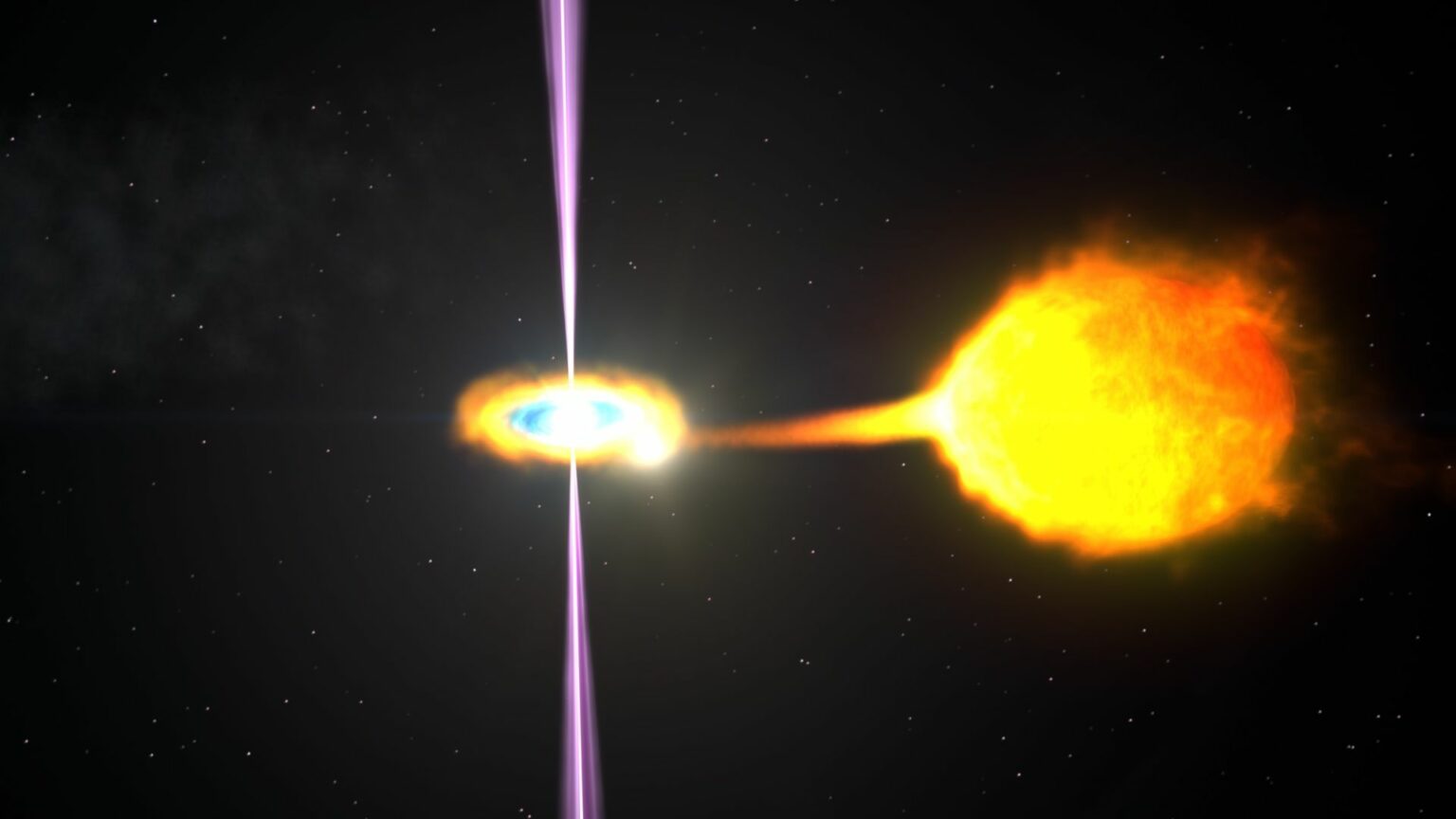A rapidly rotating cannibal pulsar found “just” 3,000 light-years from Earth. It belongs to a rare type of binary star cannibalistic system, known as the “black widow”. Currently, there are about 20 similar systems in the Milky Way galaxy. They are usually a pulsar, which is a rapidly rotating neutron star formed after a supernova explosion, which devours matter from its companion star. As the infalling matter accumulates onto the surface of the pulsar, a torrent of X-rays and gamma rays are unleashed from it, which further destroy its neighbor.

The Black Widow system was designated as ZTF J1406+1222. It was discovered with the help of the Palomar Observatory in California by scientists from the Massachusetts Institute of Technology, led by Kevin Burdge. ZTF J1406+1222 is the closest known binary system. In such close systems, the pulsar and its companion are locked in an orbital dance with a period of only 62 minutes. There is also a third star in the system, but it is in a very wide orbit with a periodicity of 10 thousand years.
Millisecond pulsar
When the accreting matter falls on the pulsar, it provides it with an additional angular momentum. As a result, the pulsar spins to such an extent that it begins to rotate at a speed of hundreds of times per second. Such rapidly rotating pulsars are called millisecond pulsars.

As the pulsar rotates, it emits an increasing amount of radiation, which heats the side of the companion star facing the pulsar. Burdge’s team concluded that this would create a significant difference in brightness between the two hemispheres of the companion. Since the companion star and pulsar orbit around a common center of mass close to each other, we will see how the large neighbor star periodically brightens and then dims.
Atypical “Black Widow”
At the same time, ZTF J1406+1222 turned out to be an atypical binary system of the “black widow” type. Since neither X-ray nor gamma radiation was detected in it. The detection of this radiation is necessary to confirm the existence of an accreting pulsar matter. Therefore, the system is still considered only as a candidate.
Astronomers believe that most black widow binary systems form inside globular clusters. If such clusters come too close to the center of the Milky Way, the gravitational tides of a supermassive black hole can tear the clusters apart and scatter their stars throughout the Galaxy.
“This system has probably been orbiting the Milky Way for longer than the Sun has existed,” says Berdge.
According to Space
Follow us on Twitter to get the most interesting space news in time
https://twitter.com/ust_magazine
